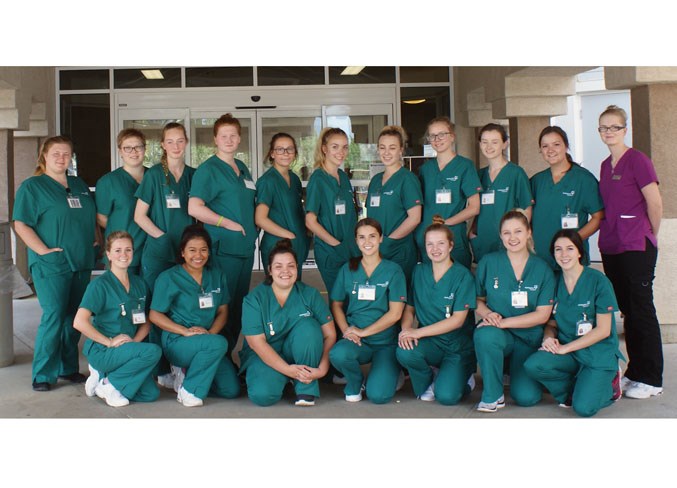There are currently 17 Barrhead and Westlock high school students completing their final health care aide clinical experience at the Westlock Continuing Care Centre.
The practicum is part of a dual-credit program provided to students by Alberta high schools and NorQuest College. The program allows students the chance to receive high school and college credits at the same time.
“Some of them are doing this because they want to be health care aides for a lifetime but a majority of them are doing this as a stepping-stone to becoming either a licensed practical nurse or a registered nurse. Others are planning on going into other areas of health care, so they are furthering their education,” said teacher and registered nurse Hollie Properzi, who is in her first year of teaching the program.
The program is offered to Barrhead and Westlock high school students who are 19 years or younger at the start of the program.
While at NorQuest and other colleges, the health care aide program can cost students anywhere from $4,300 to $5,000, the fee is considerably reduced if the program is completed through high schools.
“If they were to come back to high school and do it through dual credit, students pay, I believe, $400,” said Properzi. “And then they get $200 back.”
Licensed practical nurse and instructional aide Hannah Mills graduated from the program in its first year in 2013.
“I was part of the pilot project and it’s definitely improved since,” she said.
Students must complete both the theoretical and the clinical portion of the program in order to be a certified health care aide.
The program benefits not only the students but also their communities, said Properzi.
“Students get that jump-start in life and have a fairly decent paying job while going through high school,” said Properzi. “And when we are done, there will be 17 certified health care aides going into the Westlock and the Barrhead communities.”
“I love it. The people are awesome, the residents make it all worth it,” said current student Missy Peters.
Her peer Cora Raudebaugh said helping the residents is worth seeing the smiles on their faces.
There is an ongoing need for health care aides in and around Westlock, with more than 60 positions available in just one of the facilities. The students can also choose between working in a government run facility or as private care aides.
“I think if we train them rurally then the students are more than likely to stay in a rural setting and work where they have trained,” said Properzi.
Out of all the dual credit programs offered by Alberta high schools, the health care aide program has been the most successful, said dual credit coordinator Karen Fischer.
Alberta high schools offer multiple different college courses such as business related courses, medical terminology and anatomy and physiology. The latter two are required for students to be eligible for the health sciences programs. Along with the health care aide program, certificate programs also include early learning and educational assistant programs.
Interested students should contact their academic counsellors or school administration for more information.



